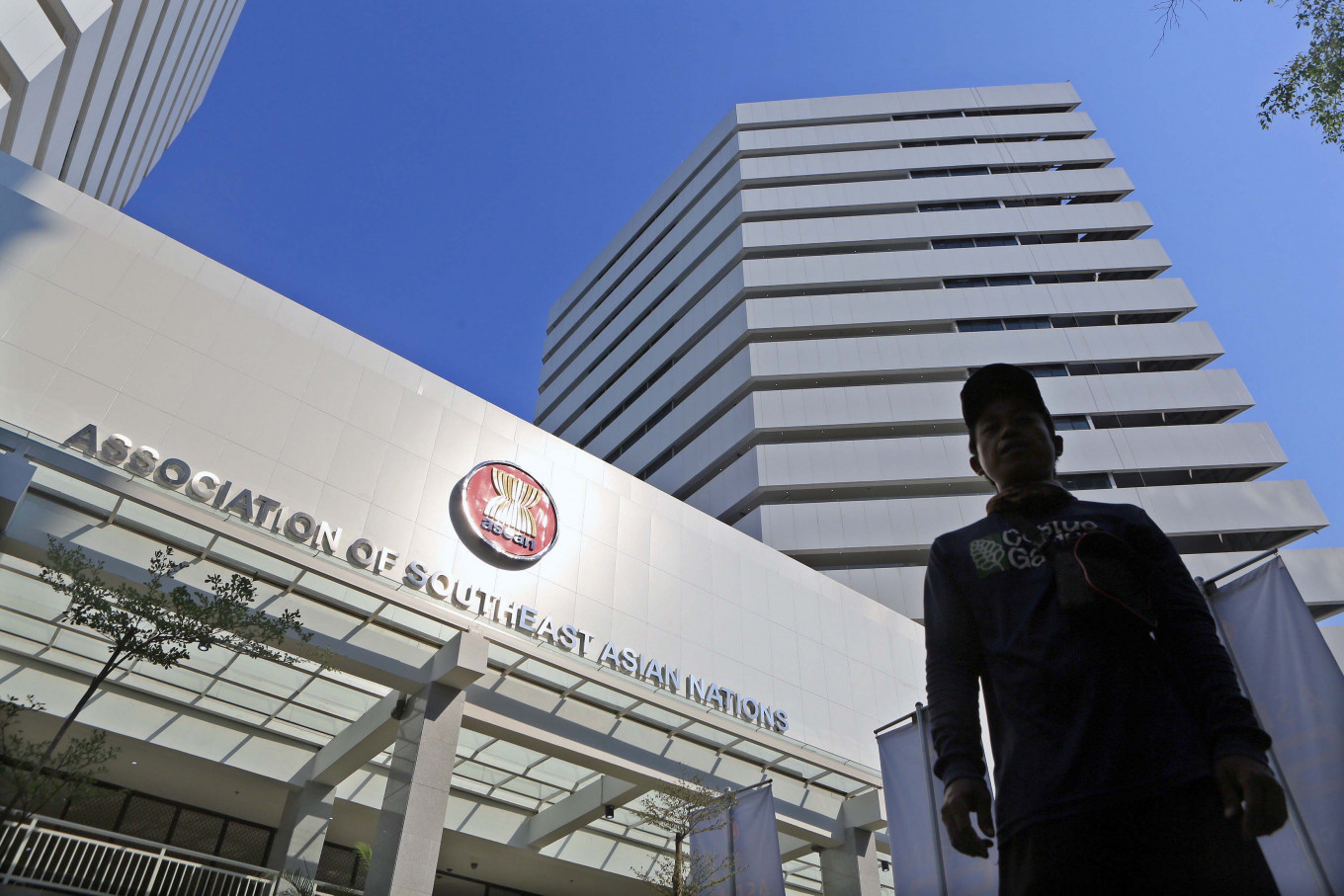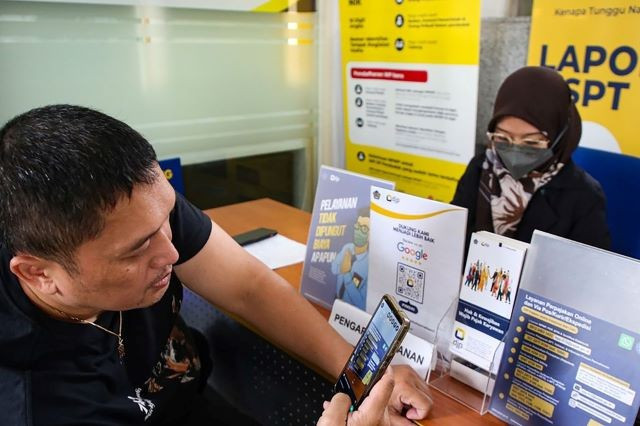Popular Reads
Top Results
Can't find what you're looking for?
View all search resultsPopular Reads
Top Results
Can't find what you're looking for?
View all search resultsIndo-Pacific connectivity needs support for good governance
Importantly, common governance rules and standards will address issues of sustainable financing and quality infrastructure, transparency in project preparation and accountability in project execution.
Change text size
Gift Premium Articles
to Anyone
A
s an evolving platform for regional architecture and economic growth, the Indo-Pacific concept got a constructive nod from the leaders of 18 member countries at the 14th East Asia Summit in Bangkok. The summit statement reiterated support for a peaceful, stable, resilient, dynamic and inclusive ASEAN community and emphasized ASEAN centrality in the evolving regional architecture. ASEAN has achieved consensus around the ASEAN Outlook on the Indo-Pacific, based on the principles of transparency, inclusivity, good governance and complementarity with existing cooperation frameworks.
ASEAN has clearly conveyed its intention to use the outlook as a guide for ASEAN’s engagement in the Asia-Pacific and Indian Ocean regions to contribute to the maintenance of peace, stability, freedom and prosperity. Its next task is to bring important partners and infrastructure plans under an institutional framework that can help develop and implement the shared principles of governance, standards and sustainable financing of connectivity for economic growth.
Connectivity plans in the Indo-Pacific are competing for space, resources, influence and results. Seeking convergence among competing connectivity plans may be a desirable policy objective but it is based on the notion that all such plans have similar objectives. The contours of most connectivity plans are different in terms of their origin, partnerships, resources and the political and economic priorities of the promoters.
For example, the ASEAN approach to connectivity relies on community building and a well-established network. It strives for a more competitive and resilient ASEAN community. The 2025 Master Plan for ASEAN Connectivity broadens this vision to achieve a seamlessly and comprehensively integrated ASEAN.
India and Japan, supported by multiple African and Asian countries, launched the Asia Africa Growth Corridor (AAGC) in 2017, with the aim of facilitating and enhancing economic growth in Asia and Africa. Here, the priority is placed on developing institutional and human resource capacity, connecting institutions with people, facilitating trade and improving technology and infrastructure on both continents.
Unveiled in 2013, the Belt and Road Initiative (BRI) has an overarching goal to promote connectivity among the Asian, European and African continents and their adjacent seas. This is to be pursued by establishing and strengthening partnerships among member countries and realizing diversified, independent, balanced and sustainable development. Financially, the BRI is mostly backed by strong financial commitments from China.
Japan’s plan for quality infrastructure and sustainable development is the basis of its connectivity partnerships in the region. Quality infrastructure is one of the four pillars of the AAGC.
In the European Union-Japan Partnership on Sustainable Connectivity and Quality Infrastructure, the EU and Japan intend to work together on all dimensions of connectivity, bilaterally and multilaterally, fully taking into account partners’ needs and demands and paying utmost attention to their fiscal capacity and debt-sustainability.
The EU and Japan will coordinate their respective cooperation on connectivity and quality infrastructure with partner third countries, notably in the regions of the Western Balkans, Eastern Europe, Central Asia, the Indo-Pacific and Africa.
In the North, the Greater Tumen Initiative (GTI) is a regional cooperation mechanism between China, South Korea, Mongolia and Russia, supported by the United Nations Development Program. The GTI prioritizes development and economic cooperation in the Greater Tumen Region through eight transport infrastructure plans and a logistical network among GTI countries. Similarly, the Central Asian Regional Economic Cooperation offers connectivity between Northern and Central Asia.
South Korea’s New Southern Policy leverages ASEAN and India as its key regional partners and as a strategic priority for South Korea.
As a significant partner of Asia, the EU has put in place building blocks toward an "EU Strategy on Connecting Europe and Asia" with concrete policy proposals and initiatives. It will be an important factor for the Indo-Pacific as it seeks to improve and standardize the regulations around sea, air and land connectivity between Europe and Asia.
The EU approach toward connecting Europe and Asia is sustainable, comprehensive and rules-based. The initiatives aim to improve connections between Europe and Asia by establishing partnerships for connectivity based on commonly agreed rules and standards and contributing to address the sizeable investment gaps through improved mobilization of financial resources and strengthened international partnerships.
The United States has initiated the Infrastructure Transaction and Assistance Network, which provides capacity building programs to improve partner countries’ project evaluation processes and project implementation capacities, advisory services to support sustainable infrastructure and coordinates US assistance for infrastructure in the region. The Transaction Advisory Fund and the Global Infrastructure Coordinating Committee are the tools that the US has deployed in the region for technical assistance and development finance. The Asia Reassurance Initiative Act of 2018, providing US$1.5 billion for 5 years until 2023, is an important part of US policy for the Indo-Pacific.
If the Indo-Pacific architecture is intended to ensure a secure, stable and prosperous region for its people, then putting the strength of different connectivity plans behind shared principles of financing, development goals and governance mechanisms is imperative. This will create commonality of purpose and synergy among the different connectivity plans in the Indo-Pacific region.
Importantly, common governance rules and standards will address issues of sustainable financing and quality infrastructure, transparency in project preparation and accountability in project execution. These issues have emerged from the implementation of connectivity plans in Asia, Africa, Europe and the Pacific.
Transformational changes in global governance, international relations, aspirations of a young demographic, technological connectivity and future of work are also driving this approach toward connectivity plans. If connectivity is to be the strategy for growth in the Indo-Pacific, then it is essential that governance mechanisms should reach and monitor its various aspects and actors. The practical aspects of trans-regional connectivity also call for a unified or common regime for the carriage of goods and people across continents.
Having adopted the ASEAN Outlook on the Indo-Pacific, ASEAN must quickly initiate the process of creating an institutional mechanism that would support the convergence of connectivity plans in the Indo-Pacific around common standards, principles and sustainable financing.
Since most, if not all, promoters of connectivity plans agree on the need for accountability, transparency and sustainability in such plans, this process will find support from all quarters. An institutional mechanism monitoring the principles and financing patterns will also ensure that connectivity plans are not used as a foil for regional leadership.
***
Director of policy relations at the Economic Research Institute for ASEAN and East Asia (ERIA). The views expressed are her own.









